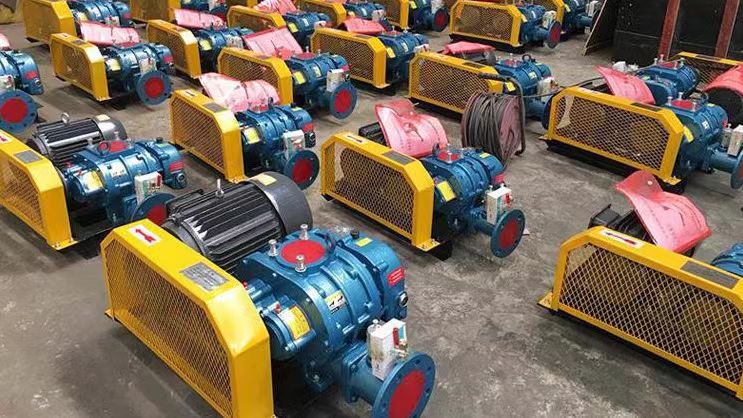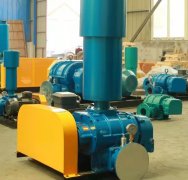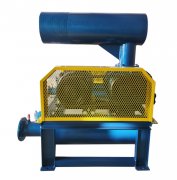Detailed explanation of bearing models for Roots blower
As the core component of the equipment, the model selection of Roots blower bearings directly affects the stability and service life of the equipment operation. Understanding the meaning and selection points of bearing models is of great significance for equipment maintenance and accessory procurement.
Basic composition of bearing models
The commonly used bearing models for Roots blowers usually follow standard naming conventions. These models are composed of letters and numbers, representing bearing type, size series, and inner diameter size, respectively. For example, the common series of self-aligning roller bearings have numbers in their models representing different size specifications and load-bearing capacities. By interpreting these model codes, one can understand the basic parameters and performance characteristics of the bearings.
Different manufacturers may add prefixes or suffixes to standard models to indicate special materials, precision levels, or sealing forms. These additional codes have a significant impact on the performance and service life of bearings, and special attention should be paid when purchasing.
Common types of bearings
Roots blowers mainly use two types of bearings: self-aligning roller bearings and deep groove ball bearings. Spherical roller bearings have automatic centering function and can withstand large radial and axial loads, making them suitable for supporting the main shaft of fans. Deep groove ball bearings mainly bear radial loads and are usually used for auxiliary support parts.
The accuracy level of bearings varies depending on the equipment specifications and working conditions. Ordinary equipment adopts standard accuracy levels, while high-speed or precision equipment requires higher levels of accuracy. The choice of sealing form is also important, and different forms such as open, dust cover, or sealing ring can be selected according to the working environment.
Key points for model selection
When choosing a bearing model, multiple factors need to be considered. Load characteristics are the primary consideration factor, including load size, direction, and nature. The speed range affects the selection of bearing types, and different bearings have their applicable speed ranges. The working temperature determines the lubrication method and clearance selection, and high-temperature environments require special treatment.
Installation conditions are also important considerations. The machining accuracy of the bearing seat and the stiffness of the shaft will affect the bearing life. The maintenance conditions determine whether to choose maintenance free bearings or types that require regular oil injection. These factors need to be comprehensively considered when selecting.
Installation and maintenance of bearings
Proper installation is crucial for the service life of bearings. Before installation, check the dimensional accuracy of the bearing seat and shaft to ensure compliance with requirements. Use appropriate tools for installation and avoid directly tapping the bearings. After installation, check the clearance to ensure it is within the standard range.
Daily maintenance includes regular checks of operating status, monitoring of temperature and vibration changes. Timely supplement or replace lubricants to maintain good lubrication condition. Promptly handle any abnormalities discovered to prevent the fault from escalating. Establish maintenance records to facilitate tracking of bearing status.
Common problem handling
Bearings may encounter various problems during operation. Abnormal temperature rise may be caused by poor lubrication or excessive load, and it is necessary to check the lubrication system and load condition. Vibration noise often indicates wear or looseness, and it is necessary to check the condition and installation of the bearings.
Insufficient lifespan may be caused by improper selection or changes in usage conditions, requiring a reassessment of the operating conditions. The damage to the retaining frame is often caused by improper installation or poor lubrication, and it is necessary to improve the installation method and lubrication conditions. These issues require corresponding measures to be taken based on specific circumstances.
Technological development trends
The continuous development of modern bearing technology and the application of new materials and processes have significantly improved the performance of bearings. Ceramic hybrid bearings have better high-speed performance and corrosion resistance. Special coating technology improves the wear resistance and service life of bearings. Intelligent bearings are equipped with built-in sensors that can monitor the operating status in real-time.
The advancement of manufacturing technology has also improved the accuracy and consistency of bearings. The improvement of heat treatment technology enhances the mechanical properties of materials. Precision machining ensures geometric accuracy and surface quality. These technological advancements provide better guarantees for the reliable operation of Roots blowers.
In short, the selection and use of bearing models for Roots blowers is a highly specialized task. By understanding the meaning of bearing models, mastering the key selection points, and standardizing installation and maintenance, it is possible to ensure the performance of bearings and extend the service life of equipment. When selecting bearings, it is recommended to refer to the recommendations of the equipment manufacturer and make a choice based on actual working conditions.



